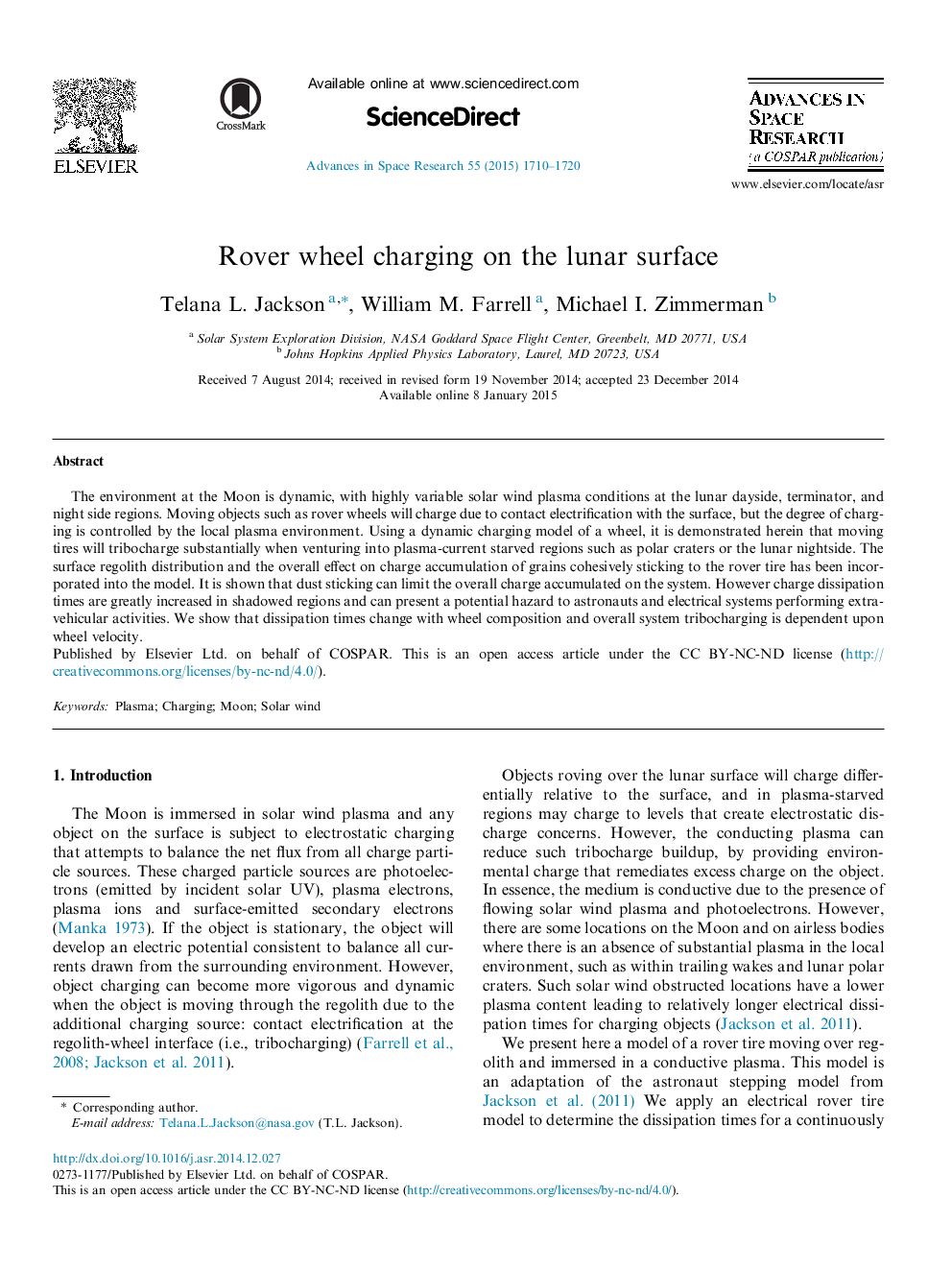| Article ID | Journal | Published Year | Pages | File Type |
|---|---|---|---|---|
| 10694192 | Advances in Space Research | 2015 | 11 Pages |
Abstract
The environment at the Moon is dynamic, with highly variable solar wind plasma conditions at the lunar dayside, terminator, and night side regions. Moving objects such as rover wheels will charge due to contact electrification with the surface, but the degree of charging is controlled by the local plasma environment. Using a dynamic charging model of a wheel, it is demonstrated herein that moving tires will tribocharge substantially when venturing into plasma-current starved regions such as polar craters or the lunar nightside. The surface regolith distribution and the overall effect on charge accumulation of grains cohesively sticking to the rover tire has been incorporated into the model. It is shown that dust sticking can limit the overall charge accumulated on the system. However charge dissipation times are greatly increased in shadowed regions and can present a potential hazard to astronauts and electrical systems performing extra-vehicular activities. We show that dissipation times change with wheel composition and overall system tribocharging is dependent upon wheel velocity.
Keywords
Related Topics
Physical Sciences and Engineering
Earth and Planetary Sciences
Space and Planetary Science
Authors
Telana L. Jackson, William M. Farrell, Michael I. Zimmerman,
